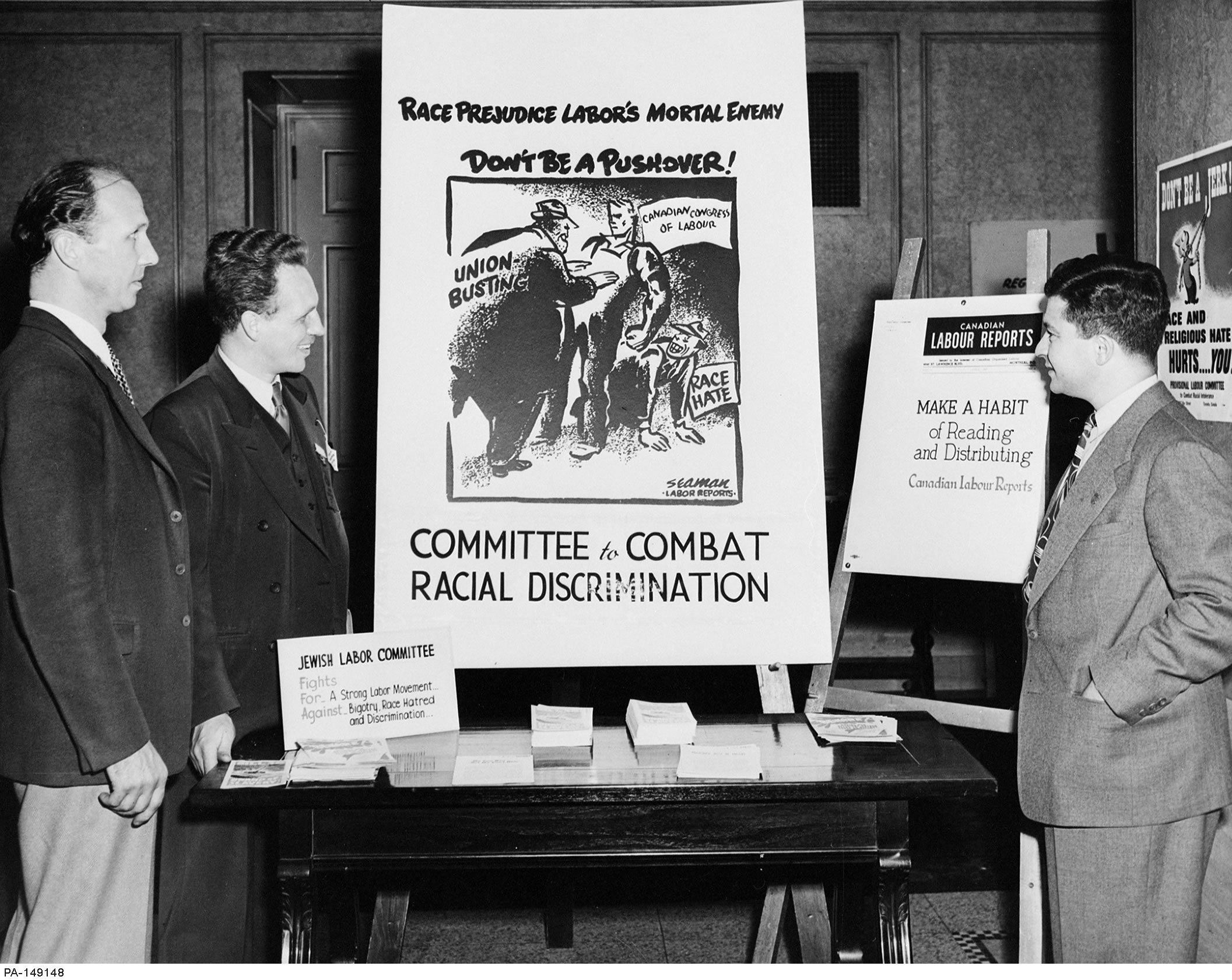1968 International Year for Human Rights
The federal government decided to make a splash in celebrating International Year for Human Rights (IYHR), which marked the twentieth anniversary of the 1948 Universal Declaration of Human Rights (UDHR). This decision would have a lasting impact on the human rights movement in Canada. For the first time, Ottawa was directly responsible for inspiring the formation of new voluntary associations through its human rights program and the work of the Canadian Commission for the International Year for Human Rights, which it established in 1967. The commission was headed by John Humphrey, dean of law at McGill University and the original drafter of the UDHR, and Kalmen Kaplansky, chair of the International Labour Organization. Funded through the federal Secretary of State department’s citizenship program, it was tasked with stimulating the genesis of provincial human rights committees, which would organize conferences and educational activities to celebrate the UDHR anniversary. In some provinces, the 1968 festivities were organized by the local Human Rights Commissions, whereas in others new bodies were formed and headed by community leaders.
According to a 1969 report on Ottawa’s activities for IYHR, the commission “had the responsibility for mobilizing the national effort through activating the myriad voluntary organizations throughout the country.” With government funding, a variety of human rights groups emerged in 1968. Under the human rights program, the Secretary of State department allocated $95,000 to the commission, and in 1969 it provided $100,000 to the program, of which $19,500 went to the commission.
Highly active in 1968, the commission enjoyed the cooperation of 147 social movement organizations across the country. It urged the provincial premiers to support and fund human rights committees, one in each province, to coordinate the celebrations. The commission encouraged national organizations such as the Royal Bank to publish human rights newsletters, distributed literature and copies of the UDHR and Canadian laws to schools, prepared and distributed speakers’ lists to more than 1,200 groups, supplied speakers to voluntary associations and service clubs, distributed press kits to the media, created displays on human rights issues for national and provincial meetings, and organized a December conference in Ottawa. In each province, the human rights committees held seminars and conferences, disseminated literature, and promoted awareness of the UDHR. As a result of the commission’s efforts, thirteen new rights associations were spawned across Canada and a short-lived national association was born.
Further Reading
Behiels, Michael. “Canada and the Implementation of International Instruments of Human Rights: A Federalist Conundrum, 1919-1982.” In Framing Canadian Federalism: Historical Essays in Honour of John T. Saywell, ed. Dimitry Anastakis and P.E. Bryden, 151-84. Toronto: University of Toronto Press, 2009.
Clément, Dominique. Canada’s Rights Revolution: Social Movements and Social Change, 1937-82. Vancouver: UBC Press, 2008.
 Site Resources
Site Resources-
- Any use of material or referencing content from HistoryOfRights.ca should be acknowledged by the User and cited as follows:
–
- Clément, Dominique. “page title or document title.” Canada’s Human Rights History. www.HistoryOfRights.ca (date accessed).


 Encyclopaedia
Encyclopaedia 
 © 2024 COPYRIGHT CLÉMENT CONSULTING. ALL RIGHTS RESERVED.
DEPARTMENT OF SOCIOLOGY, UNIVERSITY OF ALBERTA
© 2024 COPYRIGHT CLÉMENT CONSULTING. ALL RIGHTS RESERVED.
DEPARTMENT OF SOCIOLOGY, UNIVERSITY OF ALBERTA